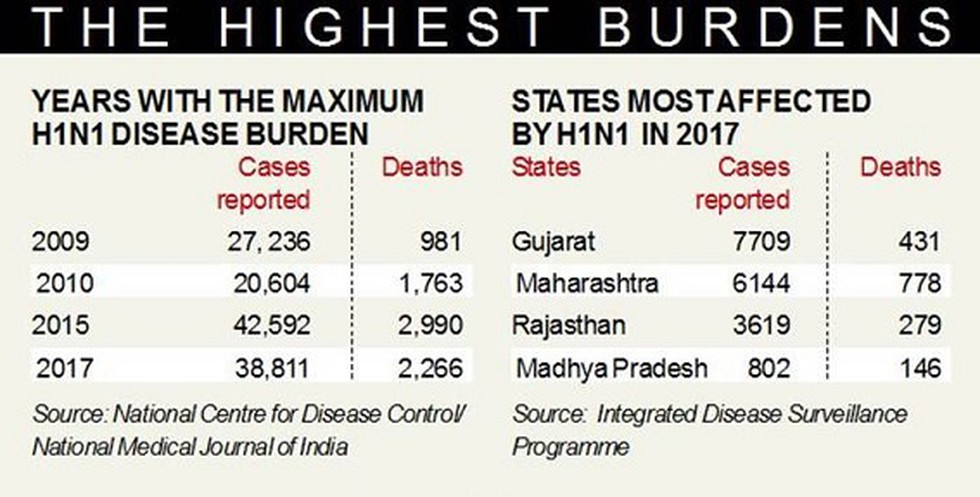Key Findings:
- In April 2009, the first case of influenza A H1N1 was reported in Mexico. Later the infection spread and a total of 214 countries were affected by the pandemic worldwide.
- In India, the past decade (2009-2019) saw as many as 1.58 lakh persons being infected by the virus and over 10,000 succumbing to it.
- Maharashtra has reported the highest number of cases (33,284) and deaths (3,637) since pandemic influenza struck in 2009.
H1N1 Flu Virus (Swine Flu):
- Swine flu is an infection caused by type A influenza viruses.
- Who are infected? It's named for a virus that pigs can get. People do not normally get swine flu, but human infections can and do happen. In 2009 a strain of swine flu called H1N1 infected many people around the world. The virus is contagious and can spread from human to human.
- Symptoms: Symptoms of swine flu in people are similar to the symptoms of regular human flu and include fever, cough, sore throat, body aches, headache, chills and fatigue.
